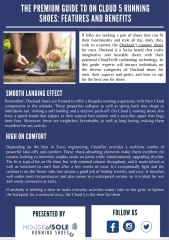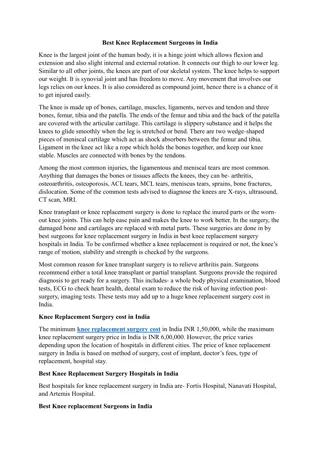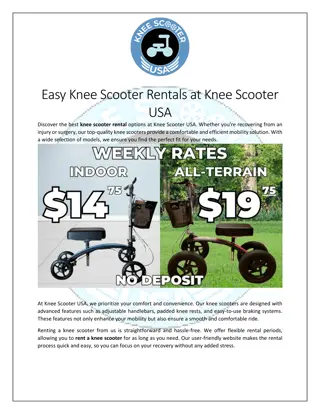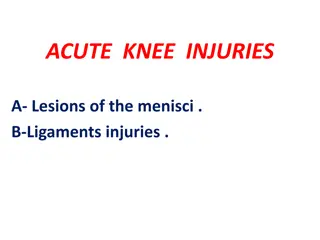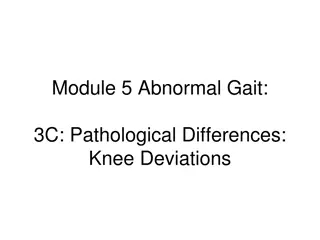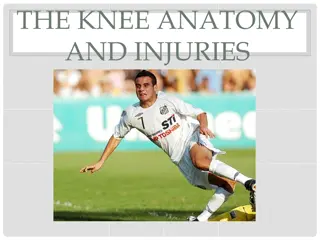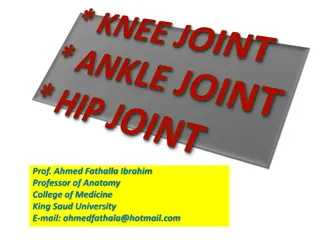Unloading Shoes for Knee Osteoarthritis: A Clinical Study
In a study by Mary Ann Forciea MD, the use of unloading shoes was explored to manage knee osteoarthritis. The research focused on reducing pain and improving physical function in individuals with medial compartment disease. The randomized controlled trial conducted in Melbourne from 2013 to 2015 showed promising results at the 6-month mark. Participants wearing unloading shoes reported improved function without significant differences between groups at 3 months. The study highlights the potential benefits of using specialized footwear for knee osteoarthritis management.
Download Presentation

Please find below an Image/Link to download the presentation.
The content on the website is provided AS IS for your information and personal use only. It may not be sold, licensed, or shared on other websites without obtaining consent from the author.If you encounter any issues during the download, it is possible that the publisher has removed the file from their server.
You are allowed to download the files provided on this website for personal or commercial use, subject to the condition that they are used lawfully. All files are the property of their respective owners.
The content on the website is provided AS IS for your information and personal use only. It may not be sold, licensed, or shared on other websites without obtaining consent from the author.
E N D
Presentation Transcript
Cinderella and arthritic knees Mary Ann Forciea MD September 22 2016
Source Hinman, RS et al. Unloading Shoes for Self- management of Knee Osteoarthritis. Ann Int Med 2016. 165:381 Editorial: P 443
Background OA of knee common, self management often recommended Weight loss, exercise, FOOTWEAR Medial compartment loading greater, damage greater Unloading shoes: soles stiffer laterally than medially reduce medial knee loads Now available commercially
hypothesis Unloading shoes will Reduce pain Improve physical function At 6 months Compared to convential walking shoes
method 2 group, parallel group, comparative effectiveness RCT Melbourne, 2013-2015 Eligible: >50 yrs knee pain on most days of prior month average pain of 4 on 11 point scale in prior week XR evidence of OK and medial compartment greater disease than lateral
Method 2 Exclude: Lateral disease >medial IA steroids or surgery in prior 3 months Prior TKR or planned in 3 months Systemic rheumatic illness Other condition limiting lower leg use Prior 6 month use of shoe inserts Inability to walk unassisted BMI >36 -pain in ankle or foot
Method 3 Randomized in blocks by radiographic severity Shoes identical; everyone blind Wear >4hr/day every day for 6 months Log of hours 7 consecutive days/month Shoe mounted pedometer for step count 7 days in 4thweek of months 2 and 5
Outcomes Self reported pain scales 3 mo, 6 mo NRS (clinically impt 1.8 points) WOMAC function (MCID 6) WOMAC pain (MCID) >18% Harms pain >2 days or required meds
Results Matching good (Table 1) (slightly young for us) Primary (Table 2): both groups improved in primary, no meaningful difference @3 mo Did wear shoes(7 hrs), little drop out(2%), incorrect guessing At 6 mo, improved function with unloading shoes, not pain Secondary no differences
Conclusions (authors) No difference in shoe group for pain and function Both types did improved function, unloading shoes better for pain Knee osteoarthritis symptoms may not be as strongly influenced by abnormal biomechanics as the literature suggests Of course subgroups might exist
Conclusions Mine Both groups improved Surprising number of steps/day for patients with OA I am unconvinced of clinical differences in any outcome. What is the influence of special shoes whether walking shoes or unloading shoes? Isn t it the WALKING that helps?


